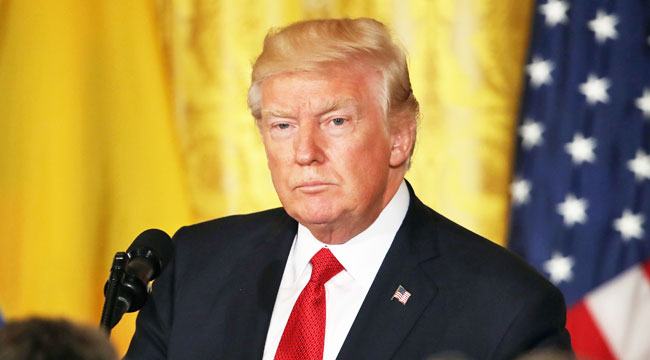
Back in August, Heath Secretary Tom Price told reporters that President Trump would soon declare a national health emergency over the opioid crisis, which Price described as “a serious problem, the likes of which we have never had.” Developments on the matter then appeared to grind to a halt until a week ago when Politico reported that Trump had decided to make the formal declaration this week, but a plan to combat the crisis was nowhere near ready. However, White House officials now tell CNN that Trump will proceed with the official “emergency” announcement on Thursday, which will be a “public health emergency” rather than a “national” one, which would have been a sweeping directive with a generous allocation of resources.
Whether or not this effort will be the result of Health and Human Services officials scrambling to meet an unexpected deadline remains to be seen. Further, the order will not arrive with designated federal funding intact. Instead, Trump hopes that Congress will plug some cash into the Public Health Emergency fund and carve out allocations during their year-end budget negotiations. Trump’s declaration will make this possible:
The move is different from the broad order Trump previewed over the last few months. The President, according to these officials, will direct acting Secretary of Health and Human Services Eric Hargan to declare a public health emergency under the Public Health Services Act, which directs federal agencies to provide more grant money to combat the epidemic, not an order through the Stafford Act.
The order, although not a broad-brush one as promised during Trump’s campaign, will be in effect for 90 days with continuing renewals as needed.
On the issue of timing, the New York Times points toward public pressure following Trump’s campaign promises to combat the epidemic. The paper notes that, in particular, New Hampshire voters likely handed him a primary victory due to this specific issue. The state’s truly in the grips of a continuing addiction crisis, and a comprehensive NY Times‘ analysis counted nearly 60,000 U.S. opioid-related deaths in 2016 alone.
If Trump’s order does free up federal dollars to send services into rural areas, White House officials’ promise of “quick” results could be accurate. However, there’s no way of knowing whether Health and Human Services is truly prepared to tackle this issue head-on, especially given last week’s report of the department’s reported “blindsided” reaction. The NY Times adds confirmation that certain Trump advisors were “surprised” by last week’s forecasting of a pronouncement.
(Via CNN & New York Times)
